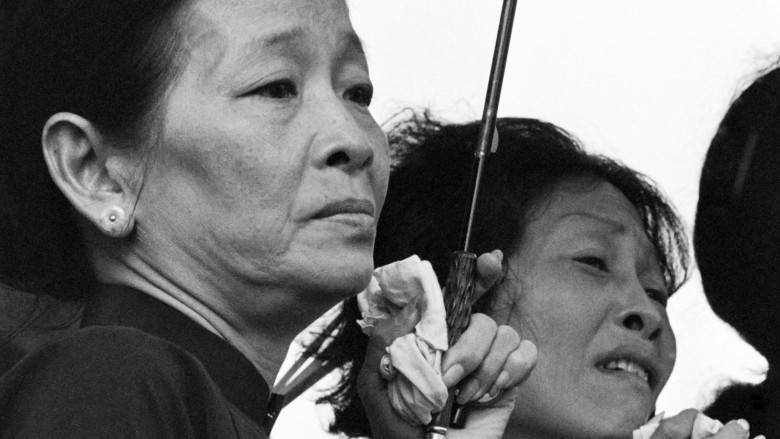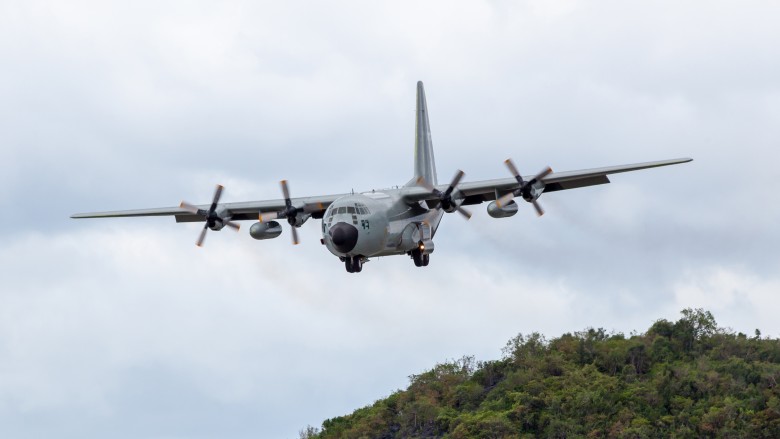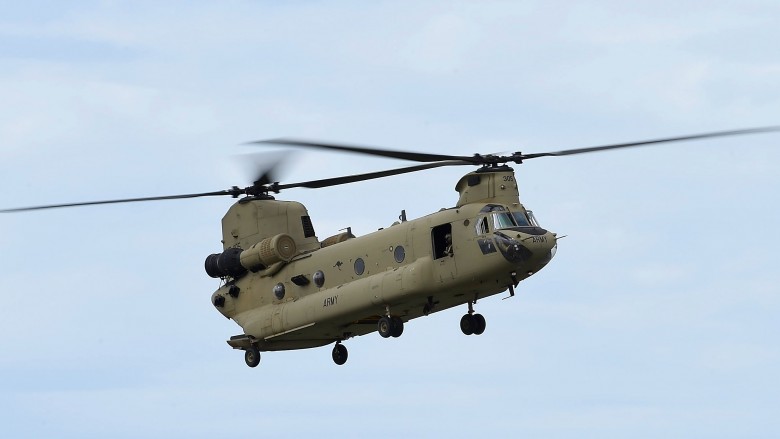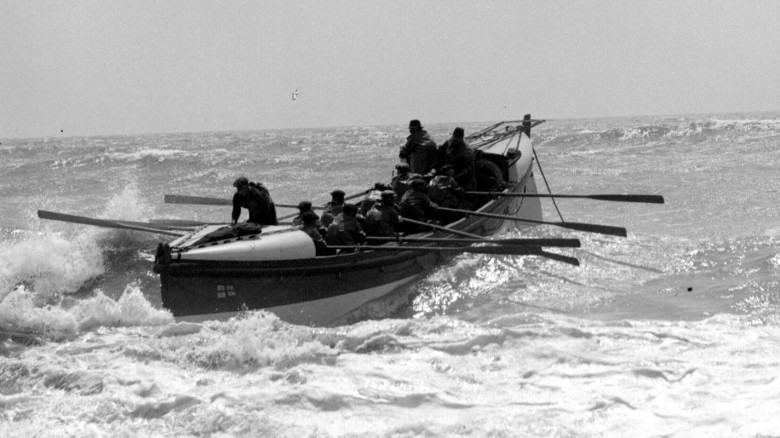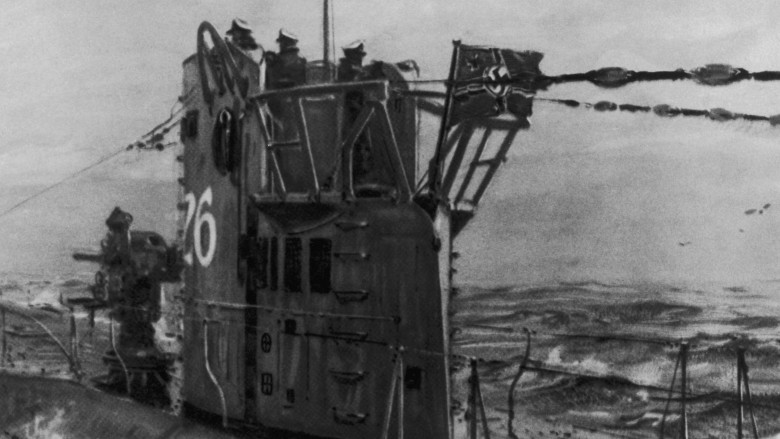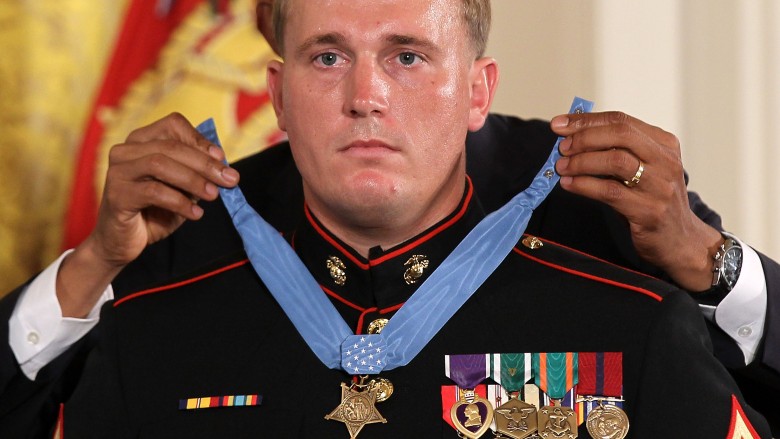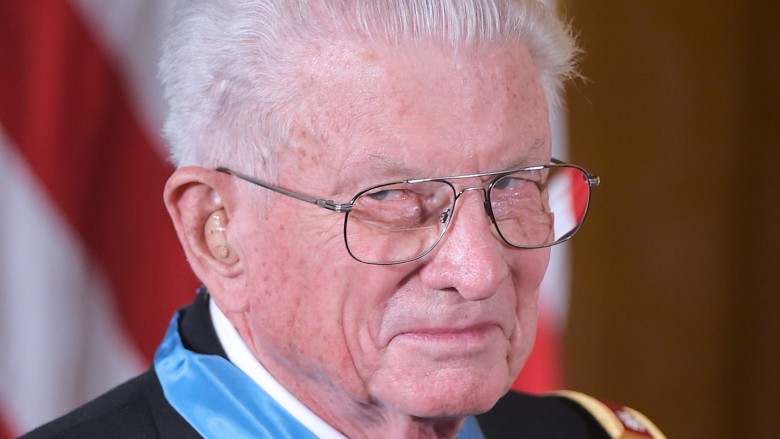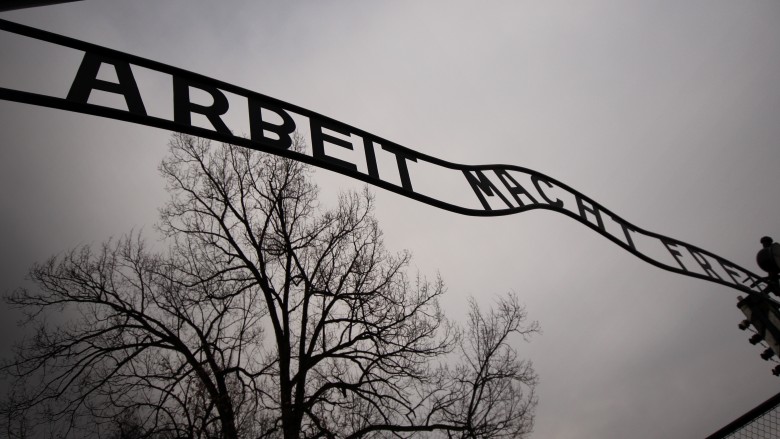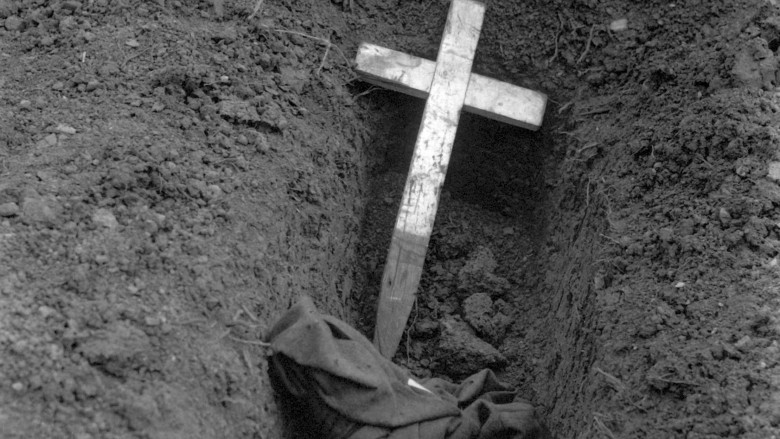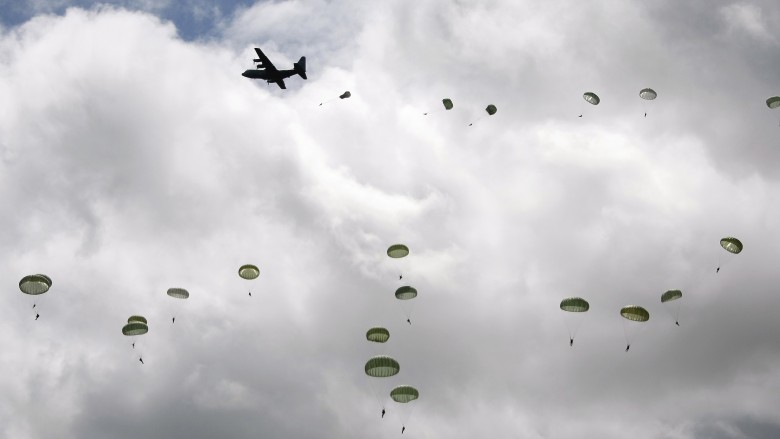Real Wartime Rescues More Dramatic Than Any Movie
A good movie should punch us square in the heart and also soothe us with a kiss. That's especially true for war movies, which often show people getting turned into Sloppy Joe meat. To make the blood and guts easier to swallow, it's not uncommon to insert a riveting rescue sequence. Because nothing warms the cockles of our hearts like seeing a good guy thwart death. Too bad reality can't be that uplifting in times of conflict.
Or can it? As you're about to see, the real world is rife with amazing wartime rescues. We'd tell you to go get the popcorn, but you'll probably be too busy picking your jaw up off the floor to chew.
Dick Swanson's eleventh-hour save
Dick Swanson sounds like an adult-themed frozen meal, but he was actually a photojournalist for Time magazine during the Vietnam War. While working in Saigon, he fell for a Vietnamese reporter named Germaine. The two married in '69 and moved to America in '71. Fast-forward to 1975. U.S. troops were preparing to ditch Vietnam like a bad date, effectively sending Germaine's overseas relatives up Crap Creek with a broken plunger. Swanson knew that leaving his in-laws trapped in a warzone might make things awkward, so he agreed to help.
Armed with $200 and four hopefully-not-maxed-out credit cards, the photojournalist flew to Saigon to cross off his killer honey-do list. As he arrived, rockets whizzed worryingly overhead. Thankfully, bombs were no match for mighty Dick Swanson. His mother-in-law, on the other hand, almost torpedoed the rescue by stubbornly refusing to leave. It would take tons of coaxing and the threat of stuffing her in a bag against her will for the family to change her mind. Then it was off to an airbase for departure.
It was a madhouse. Thousands clambered to leave. Soldiers were conscripting draft-aged men at random, meaning Swanson's male in-laws had to be careful. And the only embassy officials in sight – a whopping two people – lacked the necessary apparatus to approve departure. Luckily, Richard Nixon wasn't America's only Tricky Dick. Swanson slyly used his press credentials to enter a prohibited area, where a lax embassy employee cleared everyone for takeoff. Once back in America, Swanson could finally breathe a sigh of relief, confident he could get out of chores for the rest of his life.
John Riordan fakes a family
Back in 1975, John Riordan had a sweet assistant manager position at the Citibank in Saigon. He lived in a fancy villa, hung out with tight-knit coworkers, and maybe even owned a cocaine chest made from powdered diamonds. (Probably not, but let's imagine.) However, things got deadly serious when Citibank learned that Saigon was about to become Commie chow. Riordan's bosses chartered a plane and told him and the other Americans to bounce like a bad check. His 34 Vietnamese coworkers, unfortunately, were out of luck.
Before jetting off to safety, Riordan promised his stranded colleagues he'd return for them and their families. Citibank, however, vowed to fire any would-be heroes. (And probably hide all their diamond cocaine, too.) Even so, Riordan had given his word, and bankers never lie. So he boarded the last commercial flight to Vietnam with no official backing, no cushy job to come back to, and no real plan for sneaking a total of 105 people out of an imploding country. He also had no choice but to succeed.
Americans and anyone who worked with them would receive Communist curb-stompings once the Vietcong arrived. But combat-eligible males caught trying to escape risked getting turned into bullet soup by the South Vietnamese. The Citibankers' only hope was to call Riordan daddy. As in, Riordan had to fabricate 105 Vietnamese children and spouses in order to get everyone evacuated. To make this rabidly absurd plan somewhat feasible, he broke them up into large groups (the first was of 15 people, while later ones were between 6 and 8) and made multiple trips. The downside? He had to pass himself off as an extremely fertile Lothario. How embarrassing.
Ba Van Nguyen's great escape
If you asked crew members of the U.S.S. Kirk what differentiated Ba Van Nguyen from Harry Houdini, they'd likely call Nguyen the better escape artist. Heck, he's probably about as magical as a person gets without being a real-life Harry Potter. So what did Asian Daniel Radcliffe do? Well, try stealing a military aircraft and making a nigh-impossible dive into the sea, and you'll maybe understand. (On second thought, you should do neither of those things.)
It was late April 1975, and the Vietcong were about to punch out Saigon like its name was Little Mac. Nguyen, a major in South Vietnam's air force, knew he'd be caught between death and a firing squad. His family wouldn't fare much better, destined for enslavement, torture, and never-ending "I told you so's." Talking the Communists down to wedgies wasn't feasible, so he and his family had to split in a jiffy. His options were limited, and everyone hates taxis, so Nguyen did the next best thing and lifted a military helicopter.
Nguyen flew his family out over the South China Sea. Fuel was growing scarce, and he needed to land fast. Close by was the U.S.S. Kirk. The crew was sympathetic but couldn't let the Nguyens land since that risked Whopper-Choppering everyone aboard. So he dropped his family to the crew below. Suddenly, Nguyen stripped to his bare essentials, somehow keeping the chopper still, and then let it plummet. At the last second, he dove. Red liquid blanketed the sea as violins played. What a waste of hydraulic fluid. As for the sexy air-stripper, he was fine.
The S.S. Rohilla's Titanic rescue
In the early months of World War I, the hospital ship S.S. Rohilla charted a course from Scotland to Belgium. Passengers included 1,400 people and a black cat, which essentially meant disaster. Not because of the black cat, you zoological racists, but because Lady Luck was anti-ocean liner at the time. Just two years prior she'd made the Titanic French kiss an iceberg. Now she was gunning for the Rohilla, which coincidentally had a Titanic survivor onboard. But instead of sinking this ship with an ice-mountain, she threw the ground at it.
Storms intercepted the Rohilla off the coast of North Yorkshire, England, and sent it careening into a gaggle of cliffs. The vessel began to splinter into three sections, hemorrhaging people as it took in water. First responders from the nearby town of Whitby rushed to the scene before they could even finish choking down their crumpets. But awful weather forced them to hold off on most rescue efforts until the next day. In the meantime they just had to pray that the Rohilla's frustrated passengers wouldn't spew brutal "your mum" jokes in retaliation.
Over the course of three days, rescuers tried everything from rowing passengers ashore to forming a human chain in the sea. Some methods succeeded while others floundered in what was truly a historic effort. According to Mary Roberts, who survived both the Titanic and Rohilla disasters, the latter was worse, given the weather, crash severity, and absence of Leonardo DiCaprio. Still, rescue crews managed to spare 144 lives. They could have saved even more had they relied on steam-powered lifeboats instead of rowboats. And moving forward, that's exactly what they did.
The Laconia lifesaver
Between mass genocide and the cartoonishly mustachioed carnival barker running a whole country, World War II wasn't Germany's proudest moment. But even the darkest clouds sometimes have a fleck of silver. One of those flecks for Germany was U-boat commander Werner Hartenstein. In a moment best described as Christmas Grinch meets Das Boot, Hartenstein went from villain to hero in a matter of days when he sank an Allied ship and then returned to save its crew.
It was September 1942. The British passenger and POW vessel Laconia chugged along the high seas with 1,800 Italian prisoners and a bunch of Brits preparing to hold a ball. Because there's always time for daintiness. Unfortunately, Hartenstein and his U-156 party pooper disagreed. With a thunderous "no masquerade!" he torpedoed the Laconia. Once Hartenstein realized that he hadn't sunk a battleship but a bunch of civilians and POWs, he immediately kicked himself in the keister. He frantically contacted his superior commanders, announcing his intention to save any survivors.
Nazi command forbade Hartebstein from saving anyone but Italians. That displeased the U-boat commander, who totally regretted that "no ball" comment from earlier." With a Red Cross flag on his vessel and humanity in his heart, he made his decision. Of course, the flag didn't stop nearby Allied forces from trying to bomb the life out of Hartenstein, who (probably) indignantly replied "It's not a swastika!" Despite the peril, Hartenstein collected hundreds of British survivors, sheepishly mumbled, "mein bad, ya'll," and brought them to the French for safekeeping and hopefully lots of dainty gatherings.
A dynamic duo gets insubordinate
If we told you Corporal Dakota Meyer and Staff Sergeant Juan Rodriguez-Chavez once saved baby unicorns from a burning building while covered in gasoline, it would still sound more believable than what they actually pulled off in Kunar, Afghanistan, in 2009. In the predawn hours of September 8, a patrol of Marines and Afghan trainees got ambushed by Hell's favorite jump scare, the Taliban. The troops found themselves drowning in bullets and grenades with no lifeguard in sight. Meyer and Rodriguez-Chavez, who were a mile away, volunteered to be the patrol's glistening Hasselhoff.
Four different times the pair asked permission to help the besieged soldiers, and each time they received unflinching no's. But citing the Marine Corps Manual's "orders-shmorders" clause, Meyer and Rodriguez-Chavez decided to go anyway. After cranking up their valor to "Super Saiyan," they drove a Humvee into a sea of 50 enemy combatants. Rodriguez-Chavez steered, Meyer manned the turret gun, and the Taliban tried to turn Meyer's unprotected head into a brain smoothie. That sounds like a recipe for total tragedy but ended up as a six-hour parade of epic fool-capping and troop-saving.
Meyer and Rodriguez-Chavez entered the Kunar death derby five times. In the first two trips they rescued 24 people by themselves. They rescued a group of wounded Americans on the third trip. On the fourth trip they were joined by Afghan forces who both wanted to rescue soldiers and determine if Meyer and Rodriguez-Chavez were secretly terminators. On the fifth trip the apparently indestructible Meyer – who had shrapnel in his arm – braved gunfire and rockets on foot. In the end, disobeying orders helped save 36 lives, earning Meyer the Medal of Honor and Rodriguez-Chavez the Navy Cross in 2011. They likely also received Straitjackets of Freedom, since heroes that fearless must be nuts.
Lieutenant Colonel Charles Kettles becomes bulletproof
Bullets and human bodies don't play well together unless there's a morgue involved. Despite that incontrovertible fact, Lieutenant Colonel Charles Kettles insisted on making himself a lead magnet when his fellow soldier's lives were at stake. It's a tale of true grit and magnanimous insanity that took place back in 1967. Kettles was leading a six-helicopter rescue squadron into Vietcong territory to retrieve 44 men who'd been distinguished guests at an ambush party. Unfortunately, the party wasn't over.
The Vietcong unleashed a hailstorm of bullets and bombs. Five choppers collected 36 men before pulling back from the furious onslaught. The sixth helicopter was manned by Kettles and copilot Ray Seacrest, who somehow must have confused their skin with Kevlar. They landed their lonely chopper right in the line of enemy fire to snag the remaining eight men. The Vietcong fired every bullet, mortar, and exploding kitchen sink imaginable. But Kettle's biggest concern wasn't the busted windshields, damaged tail, or bullet-riddled propeller. With 13 people onboard, his chopper was almost too fat to fly.
The extra men made their helicopter 600 to 700 pounds (about one large sumo wrestler) overweight. Kettles and Seacrest had to compensate by bouncing their chopper like a flying lowrider. After several hops they got the metal grasshopper airborne and giggled at Death as they exited. Kettles' madcap bravery would earn him the Medal of Honor in 2016. Would have been nice to see his hydraulic chopper featured in a special episode of Pimp My Ride and fitted with propeller rims.
Captain Robert Trimble becomes the secretest agent
In 2006, 89-year-old Robert Trimble let something slip to his son, Lee, that ended in a crazy admission. As a U.S. Air Force captain he'd entered Soviet-occupied land and helped hundreds of POWs, Holocaust survivors, and others in a mission so covert that he kept quiet for 60 years. It tasted like the least believable flavor of nonsense. Was Trimble secretly James Bond without the icky venereal diseases? Lee dug into his father's past and got the shock of his life.
There was no malarkey. Everything checked out. Trimble, a veteran of 35 bombing missions, received the option of going back to his family in 1944 or returning repaired warplanes to Italy and England. What the government left out was the entire truth, including the part where Trimble would save POWs and Soviet spies would stick to him like white on a Nazi. By the time he learned the truth, Trimble was already in Commie country with no time to pout. By the end of his six-week mission, he had ushered nearly 1,000 people to safety, including 400 French women apparently in one mission. As it turns out, lying and bribery can be awesome.
Bataan's bold jailbreak
What do you get when you combine superlative fighting ability, extreme gruffness, and pit bull determination? A man capable of moving mountains by sheer force of punching, a man like Army Colonel Henry Mucci. Well-versed in judo, boxing, and murder-fu, he stood out as one of World War II's more beloved military leaders with his larger-than-life personality and knack for getting the job done. Arguably, his biggest claim to fame came when he led 121 Army Rangers across 30 miles of poisonous snake-infested Filipino terrain to free over 500 beleaguered POWs.
The seeds of the mission got planted in 1943 when it came to light that the Japanese had turned Bataan into the Torture Olympics. The number of death marches, starvation sessions, and beheadings POWs endured would give the Saw screenwriters nightmares. Fearful of mass executions toward the end of the war, American military brass tapped Mucci to storm Bataan in 1945. A beloved and batty leader, Mucci had also spent a year molding farm boys into granny-clobbering jungle fighters. That's no typo. Mucci had vowed to make the men so fierce they'd kill their grandmas.
With the aid of Filipino guerrillas and volunteers, Mucci and the granny slayers marched to Bataan in late January. They only needed five minutes to incapacitate the guards and another ten to get the POWs out of the camp. Eight hundred Japanese soldiers accompanied by eight tanks tried to stop the men from leaving but weren't ready for freedom's jelly. The combined American and Filipino forces thwarted the tanks with roadblocks and took out 300 enemy combatants. Outmatched, the Japanese sounded a brown alarm in their pants and yielded. The number of grandmas harmed was unreported.
The no-hitter at Los Banos
Millions of people know that a lightly bearded Tom Hanks rescued Matt Damon from helmet hair during World War II. Almost no one knows about the Los Banos rescue raid, an undertaking so high-stakes and dauntingly complicated it makes Saving Private Ryan look like Shaving Hanks' Peach Fuzz.
The backstory to this operation reads like a page out of Satan's diary. Toward the end of World War II, the Japanese had 2,145 military and civilian detainees at the Los Banos POW camp in the Philippines. As part of Japan's wartime "Why Be Humane?" campaign, its soldiers were systematically starving the POWs to death. But as the jaws of defeat steadily grinned at the Axis, the Japanese decided it was better to snuff out all their prisoners than see them go free. They scheduled a mass execution for February 23, 1945.
Thankfully, a civil engineer managed to escape captivity and tip off the allies about the heinous crimes about to go down. Horrified, the U.S. military quickly cobbled together a group of liberators who would strike by land, air, and sea, coming together like a fleshy Voltron. The catch? They had to avoid detection by 10,000 Japanese troops located just south of the POW camp. After loads of planning, forces reached Los Banos under cover of darkness on February 23.
Surpassing soap opera levels of improbability, paratroopers rained from the sky that morning as the Japanese lined up POWs for execution. As one soldier later recalled, the raiders had "caught [the Japanese] with their pants down." A one-sided, partially pantsless melee ensued during which no prisoners died. The rescue went without a hitch. Because even though life is always more real than the movies, it's sometimes less realistic.

